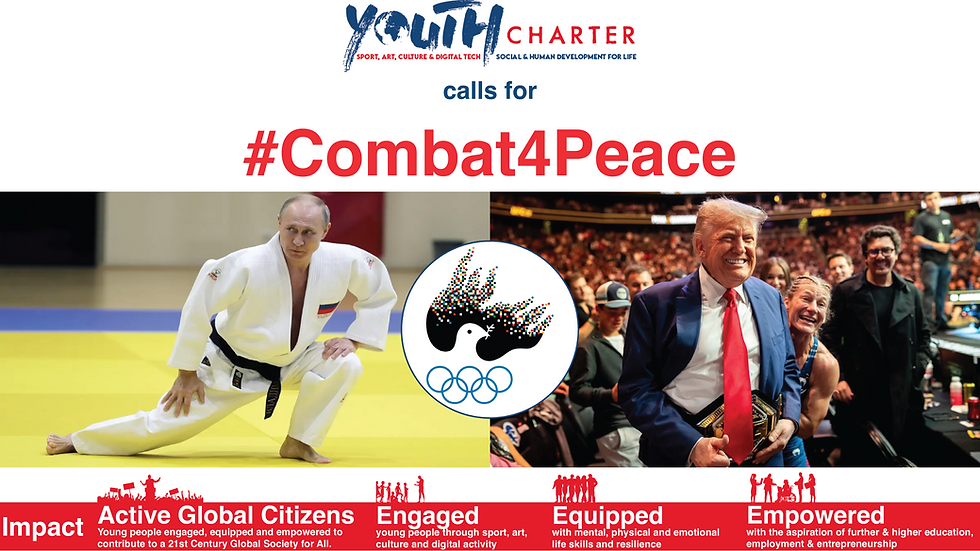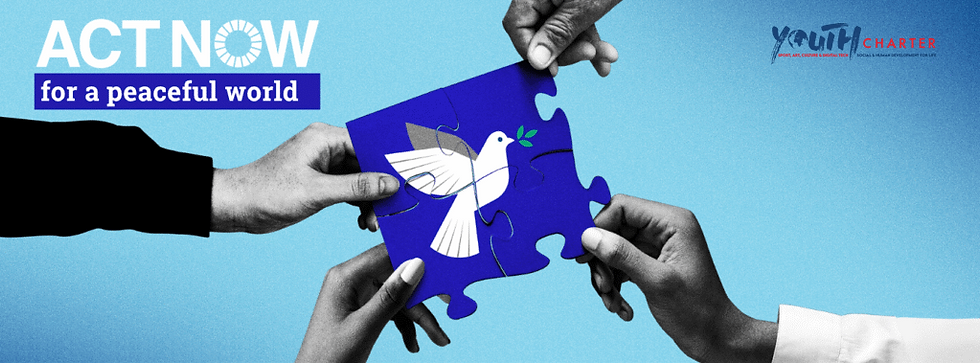Combat for Peace: Harnessing the Power of Sport to Bridge Divides
- Aug 15
- 3 min read

This week in Anchorage, Alaska, the world will watch as two of its most polarising leaders – Donald Trump and Vladimir Putin – meet to discuss peace in Ukraine. The headlines will focus on “land swapping” and “combat lines” – hard geopolitical terms forged in the steel of war. Yet, beneath these entrenched positions lies an opportunity to explore another form of combat – one that unites rather than divides, challenges without destroying, and channels aggression into respect, discipline, and reconciliation.
Both leaders have a passion for combat sports. President Putin is a lifelong judoka; President Trump is an avid follower of UFC. These shared passions are not just hobbies – they represent a symbolic bridge. Combat sports demand respect for your opponent, humility in victory, and dignity in defeat. They require discipline, courage, and self-control – the very values the world needs if it is to step back from the brink of further conflict.
From the Battlefield to the Sports Arena
History teaches us that sport has the power to pause conflict. The ancient Greek Ekecheiria, or Olympic Truce, suspended hostilities to allow safe passage for athletes and spectators to the Games. In our own time, sport has been a tool of diplomacy – from “ping pong” in the Cold War, to rugby in post-apartheid South Africa, to football matches in divided communities.
Why should combat sports not take their place alongside these examples? Imagine a Combat for Peace Accord, where judoka, boxers, wrestlers, karateka, taekwondo masters, mixed martial artists, and other combat practitioners come together to champion peaceful resolution through physical discipline. Instead of armies of soldiers, we mobilise armies of coaches, instructors, and champions – role models who can show young people that conflict can be resolved with skill, respect, and rules, rather than bullets and bombs.
Combating Violence with Controlled Aggression
Combat sports are uniquely suited to address some of our most urgent global challenges:
Violence against women and girls – By teaching respect, discipline, and the controlled nature of physical engagement, combat sports can break cycles of abuse and empower women as practitioners and leaders.
Youth violence in inner-city and suburban communities – By channelling frustration and aggression into training, young people learn to respect themselves and others, replacing street fights with sparring sessions.
Inter-community and inter-country conflict – By creating mixed training camps and tournaments, rival groups can meet on equal terms, wearing gloves or gis rather than military uniforms.
This is not romantic idealism. Across continents, combat sports programmes have reduced crime, built bridges between divided groups, and transformed lives. What is needed now is scale, structure, and global commitment.
The Youth Charter has, for over three decades, championed sport for development and peace as a fundamental right and necessity for young people and communities. Today, we call for a Global Combat for Peace Movement, underpinned by:
ree
An Olympic Truce Revival – Enforced and celebrated not only every four years but embedded into annual community combat sport festivals.
A Global Combat Coaches Corps – Recruiting instructors from every martial art discipline to serve as social coaches, peace ambassadors, and mentors.
Continental Combat Leagues for Peace – Rotating between regions, bringing together young people from conflict-affected areas in a celebration of skill, culture, and friendship.
If Trump and Putin can agree on nothing else, perhaps they can agree on this: that the combat they love can be reimagined, repurposed, and redirected to inspire a generation toward peace.
This is not about glorifying violence. It is about confronting it – and transforming it into something constructive. It is about showing that strength and compassion are not opposites, but partners.
The world is ready for a new kind of truce. One that doesn’t simply stop the fighting, but replaces it with a contest in which everyone can emerge richer – in friendship, in understanding, and in hope.
If leaders will not fight for peace, then let the fighters lead.





Comments